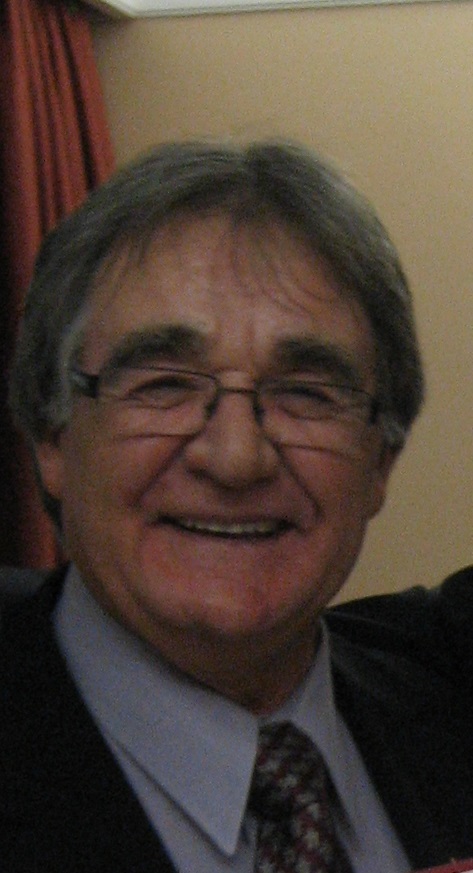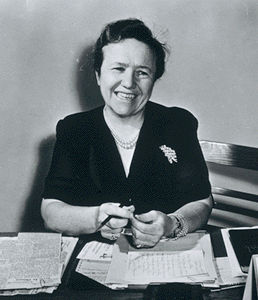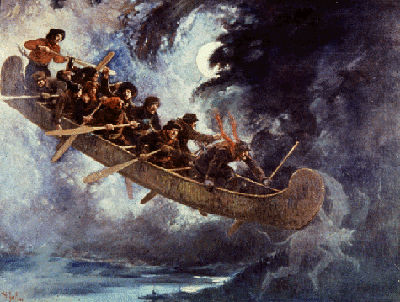Article
Charlie Sivuarapik
Charlie Sivuarapik (Sheeguapik), sculptor (b near Povungnituk, Qué about 1911; d 26 Sept 1968 of tuberculosis).

Enter your search term
Signing up enhances your TCE experience with the ability to save items to your personal reading list, and access the interactive map.
Create AccountArticle
Charlie Sivuarapik (Sheeguapik), sculptor (b near Povungnituk, Qué about 1911; d 26 Sept 1968 of tuberculosis).
"https://development.thecanadianencyclopedia.ca/images/tce_placeholder.jpg?v=e9dca980c9bdb3aa11e832e7ea94f5d9" // resources/views/front/categories/view.blade.phphttps://development.thecanadianencyclopedia.ca/images/tce_placeholder.jpg?v=e9dca980c9bdb3aa11e832e7ea94f5d9

Article
Charlie Watt, Inuk leader (born 29 June 1944 in Fort Chimo [now Kuujjuaq], Québec). Watt founded the Northern Québec Inuit Association in 1972 and was a negotiator for the James Bay and Northern Quebec Agreement (JBNQA), signed in 1975. He served in the Canadian Senate from 1984 to 2018. Since January 2018, he has served as president of Makivic Corporation in Nunavik, the Inuit homeland in northern Quebec.
"https://d2ttikhf7xbzbs.cloudfront.net/media/media/48967edd-6784-4267-8f58-50ad85dc8206.jpg" // resources/views/front/categories/view.blade.phphttps://d2ttikhf7xbzbs.cloudfront.net/media/media/48967edd-6784-4267-8f58-50ad85dc8206.jpg

Article
Chanie “Charlie” Wenjack (born 19 January 1954; died 23 October 1966 near Redditt, ON). Chanie Wenjack, an Anishinaabe boy from Ontario, ran away from his residential school near Kenora at age 12, and subsequently died from hunger and exposure to the harsh weather. His death in 1966 sparked national attention and the first inquest into the treatment of Indigenous children in Canadian residential schools.
"https://d2ttikhf7xbzbs.cloudfront.net/media/media/d977d73d-e6e6-4d17-8807-e4eae8c74305.JPG" // resources/views/front/categories/view.blade.phphttps://d2ttikhf7xbzbs.cloudfront.net/media/media/d977d73d-e6e6-4d17-8807-e4eae8c74305.JPG

Article
Charlotte (Augustine) Cadoret (Sister St-Jean-du-Sacré-Coeur, Congregation of Notre-Dame). Educator, composer, pianist, (Newark, NJ, to Canadian parents, Feb 29, 1908 - Montreal, March 7, 1995). Teaching certificate (Montreal) 1928, B.Mus. (ibid.) 1931, L.Mus. (ibid.) 1941.
"https://development.thecanadianencyclopedia.ca/images/tce_placeholder.jpg?v=e9dca980c9bdb3aa11e832e7ea94f5d9" // resources/views/front/categories/view.blade.phphttps://development.thecanadianencyclopedia.ca/images/tce_placeholder.jpg?v=e9dca980c9bdb3aa11e832e7ea94f5d9

Article
Charlotte Edith Anderson Monture (often known simply as Edith Monture), Kanyen’kehà:ka (Mohawk) First World War veteran, registered nurse, (born 10 April 1890 on Six Nations reserve near Brantford, ON; died 3 April 1996 in Ohsweken, ON). Edith Monture was the first Indigenous woman to become a registered nurse in Canada and to gain the right to vote in a Canadian federal election. She was also the first Indigenous woman from Canada to serve in the United States military. Edith broke barriers for Indigenous women in the armed forces and with regards to federal voting rights. A street (Edith Monture Avenue) and park (Edith Monture Park) are named after her in Brantford, Ontario.
"https://d2ttikhf7xbzbs.cloudfront.net/media/Twitter_Cards/Edith Monture 1.jpg" // resources/views/front/categories/view.blade.phphttps://d2ttikhf7xbzbs.cloudfront.net/media/Twitter_Cards/Edith Monture 1.jpg

Article
Charlotte Gray, historian, biographer (born 3 January 1948 in Sheffield, United Kingdom). Charlotte Gray is the author of a dozen best-selling Canadian history books and an adjunct research professor in the department of history at Carleton University. She is a recipient of the Pierre Berton Award for distinguished achievement in popularizing Canadian history.
"https://d2ttikhf7xbzbs.cloudfront.net/charlotte-gray-1.jpg" // resources/views/front/categories/view.blade.phphttps://d2ttikhf7xbzbs.cloudfront.net/charlotte-gray-1.jpg

Article
Charlotte Mount Brock Schreiber, née Morrell, painter (b at Woodham, Eng 1834; d at Paignton, Eng 1922). Schreiber was the only female charter member of the ROYAL CANADIAN ACADEMY in 1880 and was the only woman elected full academician until 1933.
"https://development.thecanadianencyclopedia.ca/images/tce_placeholder.jpg?v=e9dca980c9bdb3aa11e832e7ea94f5d9" // resources/views/front/categories/view.blade.phphttps://development.thecanadianencyclopedia.ca/images/tce_placeholder.jpg?v=e9dca980c9bdb3aa11e832e7ea94f5d9

Article
Charlotte Small Thompson, Cree wife of and collaborator with David Thompson (born ca. 1785 in or near Île-à-la-Crosse, SK; died 4 May 1857 near Montreal, QC). Charlotte’s husband, David, is celebrated today as one of North America’s most accomplished geographers. Between 1799 and Thompson’s retirement from the fur trade in 1812, Charlotte travelled with him more than 20,000 km across northwestern North America. She raised a growing family while doing so — 5 of her 13 children were born during this period — as well as provided linguistic, logistical and subsistence support for her husband’s fur trading and survey work with the North West Company. The couple lived the rest of their long lives in Eastern Canada, far from Charlotte’s Cree homeland.
"https://d2ttikhf7xbzbs.cloudfront.net/CharlotteSmall/IleALaCrosse.jpg" // resources/views/front/categories/view.blade.phphttps://d2ttikhf7xbzbs.cloudfront.net/CharlotteSmall/IleALaCrosse.jpg

Article
After resigning from the Welfare Council in 1941, Whitton championed women's equality in politics and the workplace. However, her views on women, as on the WELFARE STATE, were contradictory. She opposed more liberal divorce laws and criticized married women who worked.
"https://d2ttikhf7xbzbs.cloudfront.net/media/media/69a2b45f-76aa-45f4-9d0d-8c82cf991e39.jpg" // resources/views/front/categories/view.blade.phphttps://d2ttikhf7xbzbs.cloudfront.net/media/media/69a2b45f-76aa-45f4-9d0d-8c82cf991e39.jpg

Article
Charmaine Elizabeth Hooper, soccer player (born 15 January 1968 in Georgetown, Guyana). Charmaine Hooper debuted with the Canadian women’s soccer team in 1986 and was a two-time NCAA first-team All-American. She represented Canada at three FIFA Women’s World Cups (1995, 1999, 2003) and won two silver medals for Canada at the CONCACAF Women’s Championships (1991, 1994). She also helped lead Canada to its first-ever CONCACAF gold in 1998. She was named Canadian Player of the Year in 1994, 1995, 2002 and 2003 and was the first player to have 100 caps for the women’s national team. She also played professionally in the US, Europe and Japan. She was named a member of the All-Time Canada XI women’s team and has been inducted into both the Soccer Hall of Fame and Museum and Canada’s Sports Hall of Fame.
"https://d2ttikhf7xbzbs.cloudfront.net/CanadianPressPhotos2022/CP2834446.jpg" // resources/views/front/categories/view.blade.phphttps://d2ttikhf7xbzbs.cloudfront.net/CanadianPressPhotos2022/CP2834446.jpg

Article
French Canadian variant of the Wild Hunt, a legend which interprets strange noises in the air as relating to a hunter condemned to hunt throughout eternity. In Chasse-Galerie, one or several persons together are able, with the help of the devil, to travel in a canoe through the air at tremendous speed.
"https://d2ttikhf7xbzbs.cloudfront.net/media/media/b31d66bd-ef5b-4cdc-900c-2484828e761f.jpg" // resources/views/front/categories/view.blade.phphttps://d2ttikhf7xbzbs.cloudfront.net/media/media/b31d66bd-ef5b-4cdc-900c-2484828e761f.jpg

Macleans
"I remain a cautious optimist in the progress of the human brain," Garry Kasparov told reporters during a historic chess match last week. "I still believe that there are some horizons it will be very difficult for a computer to cross.This article was originally published in Maclean's Magazine on February 26, 1996
"https://development.thecanadianencyclopedia.ca/images/tce_placeholder.jpg?v=e9dca980c9bdb3aa11e832e7ea94f5d9" // resources/views/front/categories/view.blade.phphttps://development.thecanadianencyclopedia.ca/images/tce_placeholder.jpg?v=e9dca980c9bdb3aa11e832e7ea94f5d9

Article
Chester Alvin Ronning, diplomat (b at Fancheng [Xiangfan], China 13 Dec 1894; d at Camrose, Alta 31 Dec 1984). He spent his early years in China and in northern Alberta.
"https://development.thecanadianencyclopedia.ca/images/tce_placeholder.jpg?v=e9dca980c9bdb3aa11e832e7ea94f5d9" // resources/views/front/categories/view.blade.phphttps://development.thecanadianencyclopedia.ca/images/tce_placeholder.jpg?v=e9dca980c9bdb3aa11e832e7ea94f5d9

"https://development.thecanadianencyclopedia.ca/images/tce_placeholder.jpg?v=e9dca980c9bdb3aa11e832e7ea94f5d9" // resources/views/front/categories/view.blade.phphttps://development.thecanadianencyclopedia.ca/images/tce_placeholder.jpg?v=e9dca980c9bdb3aa11e832e7ea94f5d9

Article
Chester (Thomas Alexander Winchester) Duncan. Teacher (literature), pianist, critic, composer, b Strasbourg, north of Regina, 4 May 1913, d Winnipeg 31 Mar 2002; ATCM 1930, BA (Manitoba) 1934, MA (Manitoba) 1939.
"https://development.thecanadianencyclopedia.ca/images/tce_placeholder.jpg?v=e9dca980c9bdb3aa11e832e7ea94f5d9" // resources/views/front/categories/view.blade.phphttps://development.thecanadianencyclopedia.ca/images/tce_placeholder.jpg?v=e9dca980c9bdb3aa11e832e7ea94f5d9
